- Aleph
- Anna Gat
- Ariel LeBeau
- Austin Robey
- David Blumenstein
- David Ehrlichman
- David Kerr
- Devon Moore
- Dexter Tortoriello
- Drew Coffman
- Drew Millard
- Eileen Isagon Skyers
- FWB Staff
- Gaby Goldberg
- Greg Bresnitz
- Greta Rainbow
- Ian Rogers
- Jessica Klein
- Jose Fernandez da Ponte
- Jose Mejia
- Kelani Nichole
- Kelsie Nabben
- Kevin Munger
- Khalila Douze
- Kinjal Shah
- Kyla Scanlon
- LUKSO
- Lindsay Howard
- Maelstrom
- Marc Moglen
- Marvin Lin
- Mary Carreon
- Matt Newberg
- Mike Pearl
- Mike Sunda (PUSH)
- Moyosore Briggs
- Nicole Froio
- Original Works
- Ruby Justice Thelot
- Ryne Saxe
- Simon Hudson
- Steph Alinsug
- The Blockchain Socialist
- Willa Köerner
- Yana Sosnovskaya
- Yancey Strickler
- iz

Tue Oct 10 2023
Andrew Benson, aka Pixlpa, is a true OG generative artist who I’ve known since we both lived in San Francisco and were part of the city’s nascent new media art scene a little over a decade ago. I’ve always loved the animated digital works he makes by building his own generative software, which he often shares in-process snippets of on social media. The pixelated sketches seem to dance across my Twitter timeline in playful airbrushy swoops, bringing light and color and a sense of painterly playfulness to my little corner of the algorithm’s dark abyss. I always wonder how exactly he makes his work, and what it feels like to be able to build machines that can endlessly paint—which is why I was excited to find out he’d been booked at this past August’s FWB FEST to host a collaborative, generative art-making workshop with our partner Highlight, the platform for creating art and culture on Ethereum.

At FEST, Andrew walked a roomful of participants through his perspectives on generative art, and then led a collaborative workshop that resulted in Energetic Beings, “A generative series of perpetually animated forms that exist within a network of energetic feedback.” The collection was then minted from the woods of Idyllwild, and anyone could mint their own “Energetic Body.”
As is often the case with FWB-hosted events, the participants in Highlight’s workshop with Andrew weren't just a bunch of randos. In fact, a lot of other incredible creators and thinkers were present—including beloved FWB member and incredible generative artist Kirsten Bevin, aka Sten. While fairly new to the generative art scene, you wouldn’t know it from looking at her intricate, architectural-feeling pieces, all of which feel hyper-intentional and perfectly executed. After wading into the generative-art waters a year and a half ago, Sten already has a series of highly successful NFT drops under her belt, and her latest UNICURSE series sold out before the special access we’d planned to give to the FWB community could even be deployed (sorry, pals).
As a way to continue connecting the dots between these two generative artists, we wanted to bring Andrew and Sten together for a chat about their varied processes, how they merge creative and systems-based ways of thinking, and what DAOs (and people, honestly) can learn from generative artists. So, we met up over Zoom to speak candidly, and you can read our lovely and insightful conversation below.
***
Willa Köerner: I’d love to start with a very basic origin-story question. How’d you both get into making generative art?
Sten: I got started quite recently, and didn't have an art or code background—I come from the world of architecture. But I am friends with a lot of artists and coders, which made me want to play in that space as well. Since there’s an enormous number of online tools and tutorials, and not to mention Discords and communities of people learning or teaching generative art, it has been quite accessible to get into. At this point I have a trusted Discord group of friends who are all making and sharing work, all of whom have different skills, and that has been really valuable in keeping me going.
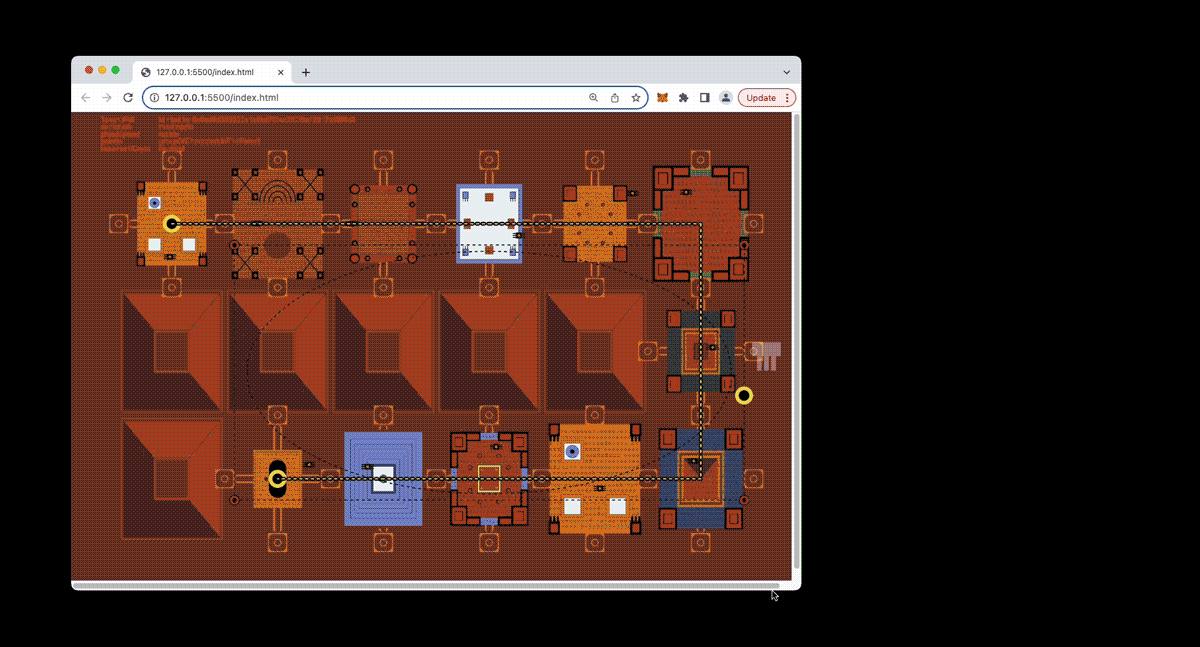
Willa: Andrew, you’re kind of the opposite, as someone who’s been in the space for a couple of decades now. How’d you end up here?
Andrew: I discovered video feedback when I was a teenager. I was kind of a nerdy kid, so I tried plugging my parents’ camcorder into the TV and then ended up making feedback videos for the next two months straight. I was also a drummer as a teenager, and people would always leave their gear at my house because the band had to practice where the drums were. I loved fucking around with patching together guitar pedals and synths when nobody else was around.
I’ve always been fascinated by weird interconnected systems and processes. I'm really just driven by this urge to find out what happens if one thing gets plugged into another, and I’ve tricked myself into learning a lot about code and computer graphics in the process of following that curiosity. But I never had any formal education in any of it. It has really just been, you know, 20 years of trying shit.
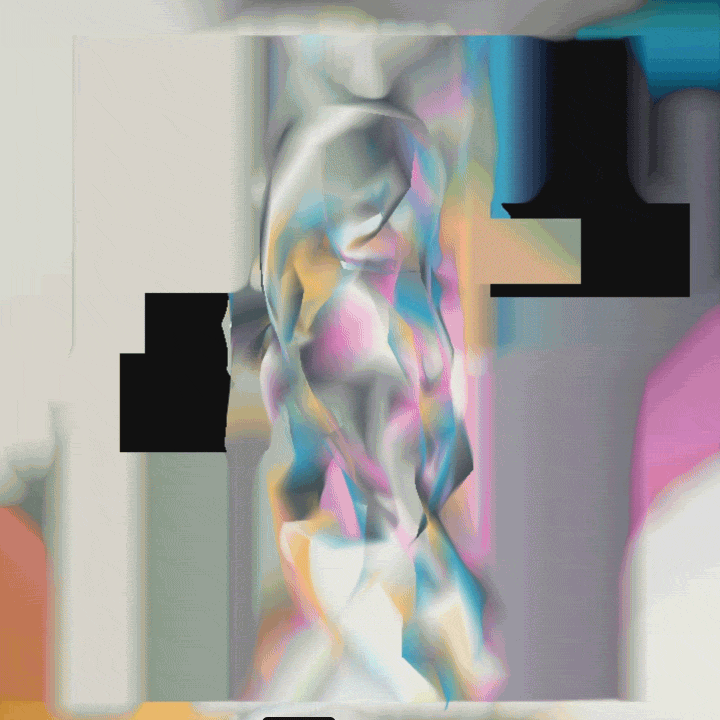
Willa: So many artists working in technology are the same way—“I just started making stuff without really knowing what I was doing.” I guess it's because for our generation, our teachers were too old to know about computer graphics or how to bridge coding into a creative practice.
Andrew: Yeah. It’s very different now. Kids get exposed to so much technology with all the apps they use in school. Computers and software are introduced like, “You use this to do this.” It all feels very formal and ingrained, whereas when I was a kid, technology felt way more analog and kind of junky, which in a way made it more accessible to mess around with. I'm curious to see how that changes things, culturally or aesthetically, for this new generation—since none of them will be learning about technology in a really hands-on, physical way.
Sten: I don't have any kind of computer background, to the extent that I've never even played a computer game. I feel like I missed that whole aspect of going into the guts of things as a way to work out how to control it. When I started learning p5 a couple of years ago, I saw it mostly as a graphics program. I was like, “I can make a circle, I can make it a color.” And for a long time, that's what I was doing. It wasn't until I joined 113’s generative art course via the Mathcastles Discord—that's when I understood that I was working with systems and making machines. Realizing that transformed everything for me. That also helped me realize why I enjoy making generative art, because art is really not my language. I'm an Excel-mind person, you know; an information organizer, a categorizer. Taking a systems-view of generative art made it all make way more sense to me.
Willa: Andrew, you take this idea even further by developing your own software to create your work. Do you think of those pieces of software as artworks in and of themselves?
Andrew: Yeah, I do. There's a continuum to the way that I think about it. If I'm going to work on a project or have an idea, there’s usually a visual part of that idea or an expressive part of that idea. But there's also a part of that idea that’s like, “How do I make this work, technically?”
In the process of trying to make something happen visually, I’ve been continuously pulled towards thinking about software as a creative medium. Just trying to create an airbrush effect through code means picking apart the most primitive parts of the visual element so I can code it myself. In the process of reverse-engineering these things, I’ve developed a deep appreciation for technologists working to enable creative expression. To me, taking on the role of both artist and programmer is what's most compelling about working on this stuff.
Sten: I agree. It feels like a very craftsperson approach. Now that I’ve waded my way into having a baby-shoes career as an NFT artist, people have started asking for my bio, and always feel like I’d prefer to call myself a “craftsperson” versus an “artist.” I think it says a lot more about what you're doing.
I guess to me, “artist” doesn't capture the skill of shaping and manipulating the material to the extent that “craftsperson” does. I’m more interested in this idea of developing a material knowledge around what I’m working with, at the expert-technician level.
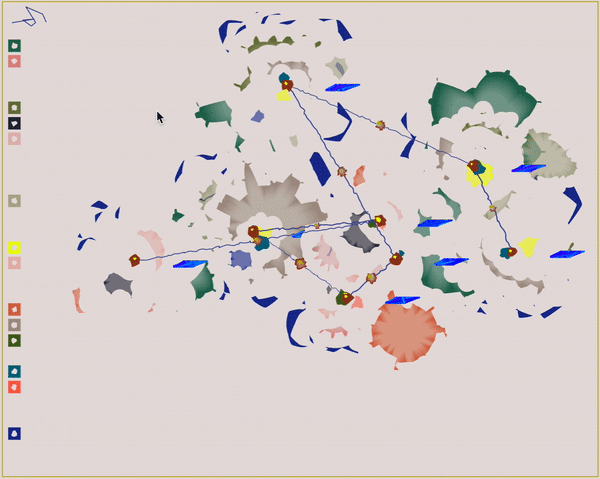
Willa: What compels you both to continue making generative art? Are there any specific new possibilities that you’re looking to explore?
Sten: I don't know about “new” possibilities, because I feel like there's an infinite expanse of possibility within what you can do with the math and the existing tools.
Andrew: Yeah, I agree. When I was 10 years younger, I felt a lot more of an economic pressure to keep on the cutting-edge of things. But having been in this space for a long time now, I find myself getting much more excited about rudimentary, fundamental, and almost bare-bone technologies.
That's one of the compelling parts about everything that's happened with NFTs—there's this whole new audience of people who've only just been introduced to the idea of art made with a computer, and the aesthetic stories involved with it. This infusion of new people has allowed for a kind of refresh, like, “What is cool about this? And how can we share this excitement with people who haven’t been plugged into the digital art space for the past 30 years?”
Sten: I always find it interesting to look at what people are impressed by, and what they're not impressed by. There’s this idea of difficulty or complexity being sort of the nucleus of generative art, where it’s exciting to see a really elegant or inventive approach to what the math can generate. With the whole NFT explosion, there's an opportunity to further examine what exactly is interesting about performing a certain function a bunch of times in a random or relational way just to see all the different outcomes.
Andrew: I think the audience for generative art has always had two factions: a more commercial audience of people who appreciate the technology, and then the art world audience. For the commercial audience, it has always been about, “How impressive can you make this thing? How clean can you make this render? How sick are these graphics?” And within the new media art space, it’s always been more driven by social, political, and conceptual frameworks. But I think right now, within the NFT space, so many people are coders and mathematical thinkers that the underlying systems have become more meaningful. There’s now this huge audience that’s interested in traits and in what the randomness variation is, and who want to see the metadata. Nobody ever cared about this in my work until recently.
Sten: I mentioned before that I did this course in the Mathcastles Discord with 113, who's one of the most brilliant thinkers and code artists. The class was made up of about 15 people who stuck with it ‘til the end. About two thirds of us were from a very code-first background, and whose entryway into making art was through the tech and NFTs. And then a few people were from the other side, and came into the class with much more of a conceptual framework. Engaging with this class was probably the clearest I've seen these two perspectives represented in one room, focusing on the same sort of ideas. It was a really interesting little vignette of those two worlds coming together and totally not speaking the same language at all. But it was brilliant because of that. We all learned so much from each other.
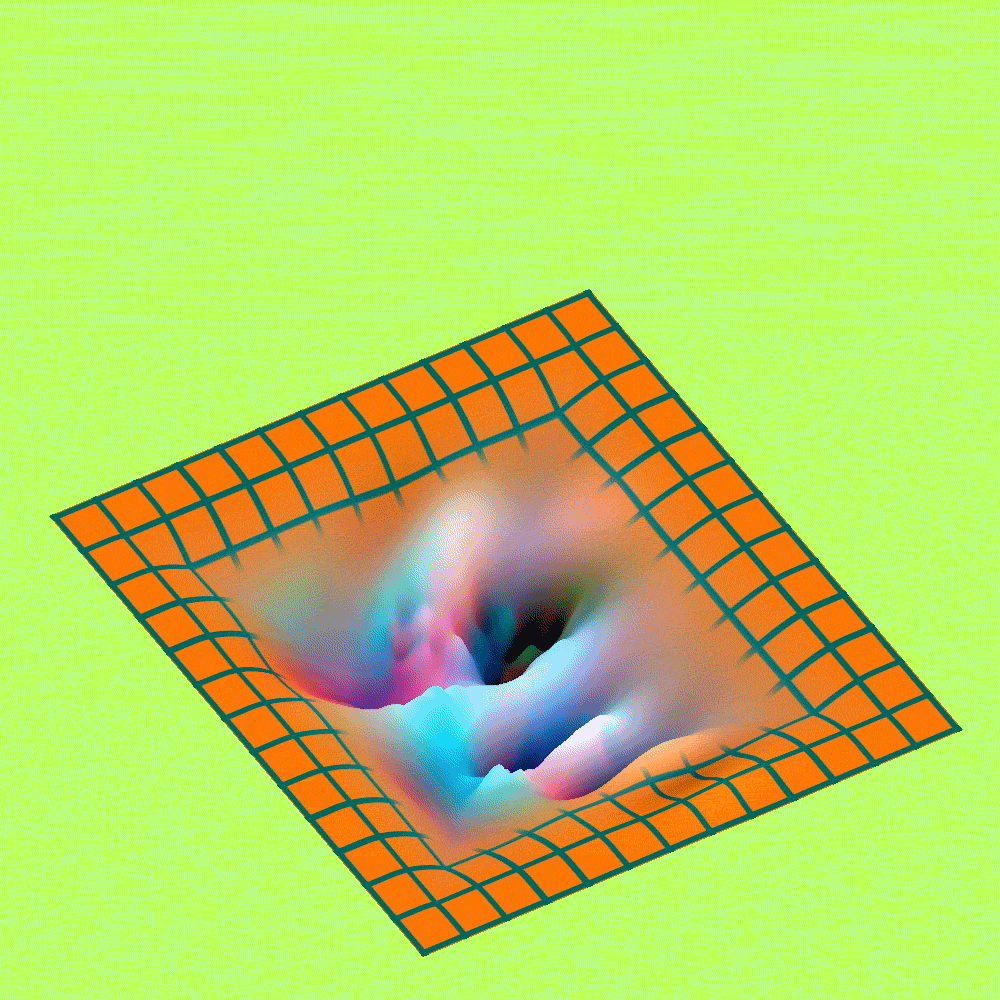
Willa: There’s always so much we can learn by stretching our brains to think in unfamiliar ways. Along those lines, I wanted to pose a parallel train of thought. After Andrew’s generative art workshop at FWB FEST, I was poking around on Highlight’s website and found a quote that really resonated:
Generative art often involves randomness or a set of predefined parameters that influence the artwork's creation. Artists design algorithms or systems that define the rules and behaviors governing the art generation process. These algorithms can produce an infinite number of variations, making each artwork unique and unpredictable.
After I saw that quote I felt like, “Wait, this is just talking about DAOs.” DAOs and generative art have so much in common in terms of how a system or set of governing structures become the creative engine for what ultimately happens. With this in mind, how should we be thinking about the systems we build DAOs like FWB on top of?
Sten: I have an urban planning background, and there’s this tendency people have to obsess over perfecting systems in cities, stemming from this desire to codify and define the containers and rules for everything. Like, “Oh, if we could just get every system working, we’d be able to optimize relationships between people’s movement and the water and electricity and public transit and all these other urban systems.” But at the end of the day, this approach is really impossible. I have a strong aversion to that way of thinking in regards to cities or communities or people, because people don’t work like code.
Willa: It’s a very techno-utopian mindset to think that by inventing the perfect system, or the perfect technology, we can make everything run smoothly.
Andrew: I always liked the pairing of Apollonian and Dionysian energy in Greek mythology. Apollonian energy is very regimented and rational, whereas Dionysian energy brings in a chaotic, exuberant, gregarious force. Just admitting that you're going to have to deal with both of these forces all the time is reassuring, in a way. You have to be swinging between both of those poles all the time in life. If you spend too much time having fun and making chaos, then nobody does the dishes, you know? There's some amount of that structuring and that rationalization that has to happen in order for us to have nice things and make progress, both as individuals and as societies. But then if it's all about making rules and plans, it's like, “Why are we here? What are we doing this for? Are we just doing this to prove that we can come up with a great plan?”
As far as governance stuff goes, and to keep your generative art metaphor going… I don't ever build anything straight out of my head into code. Instead, it’s this process of exploration, like, “What is actually going to work here? What happens with various inputs?” It's this feedback loop where you need to experiment with variables to find what works, and what’s interesting. We need to get outside of binary thinking and get comfortable playing with the variables.
Sten: It can be hard for systems-oriented people to get out of binary thinking. I’m always planning these projects out like, “Here's the overarching structure, then here are the little parts of it,” all set out in this beautiful Figma file. In my heart, I'm like, I've basically done this work. But as soon as I start actually messing around, it inevitably doesn't work or something else comes up that makes me want to change the plan. And I feel like maybe that's the useful metaphor: you have to start experimenting before you perfect the plan. You have to have this sort of collection of stuff you're okay fucking around with as little pieces in your toolkit in order to evolve those pieces into an actual beautiful plan.
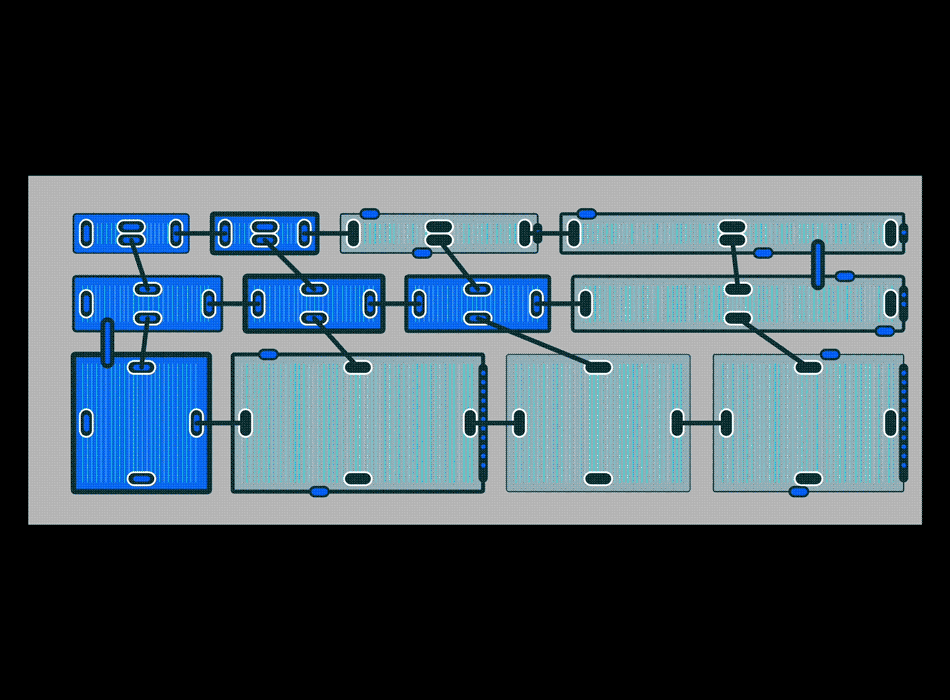
Willa: There's so much you have to fuck up before you get something right, but it’s so easy to lose sight of that. What else can we learn from generative artists?
Andrew: Risk tolerance is a big part of it. When making software as an art form, you have to deal with the fact that it actually needs to work on some level, right? There's no art if the thing just stops working. So as much as it’s important to explore and try things, there's also this whole other side, where if you push things too far, they stop working. If you make your shader too complex, the graphics card can't handle it. So you learn over time, “If I do that, it’s gonna fuck it up,” and you start developing guardrails to keep things from going haywire. In some ways, that's what I see with DAOs right now. There hasn't been enough of a time period to develop a knowledge base to use as guardrails, like “Oh, if we do that, then things fuck up.”
Sten: Right. Plus, all DAOs are made up of different people who have different purposes for what they're actually wanting to do anyway. I don't actually know that much about DAOs, I gotta be honest. I like FWB, for example, because I like the people in it. But the DAO side of it is not something that is important to me.
Willa: I mean, I don’t think you’re alone in that feeling. At its heart, FWB is a community of people that all share this alignment around being interested in decentralized technology and culture. The DAO part is just a layer that enables us to organize ourselves and share resources in different ways, but it can often feel like the DAO part takes the most effort to maintain because it’s so undefined. We are a community, we’re a brand, we’re a mini government, we’re a creative studio. There is a lot going on.
Andrew: Yeah. If you go to a concert, most people in the crowd are happy to just watch and enjoy it. Then there's a few people in the crowd who are like, “if I could get up on that stage and be part of the band, that would be so much cooler.” I definitely feel like that's the way it is with FWB and with other DAOs, where there are a lot of us who just want to hang out and go to FEST and see all our friends and talk about the internet. And then there's the people who are like, “How can I get more involved? How can I have a voice in shaping this thing?” And in a lot of ways, the major challenge with a DAO is figuring out how to provide that on-ramp for the people who want to be on stage with the band, without always needing to reinvent the music because of who’s jumping on stage.
***
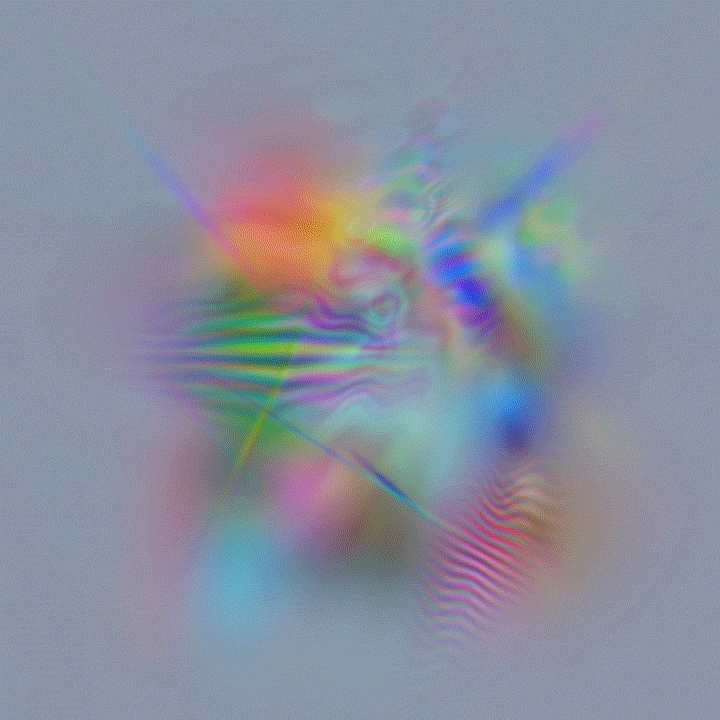
All featured GIFs are screen captures of pieces by Andrew and Sten. In order of appearance:
- Kirsten Bevin, UNICURSE
- Andrew Benson and FEST attendees, Energetic Beings
- Kirsten Bevin, Psychedelic Islands
- Andrew Benson, Wavelet Pools
- Kirsten Bevin, Little Block Machines
- Andrew Benson, gaborFM10



